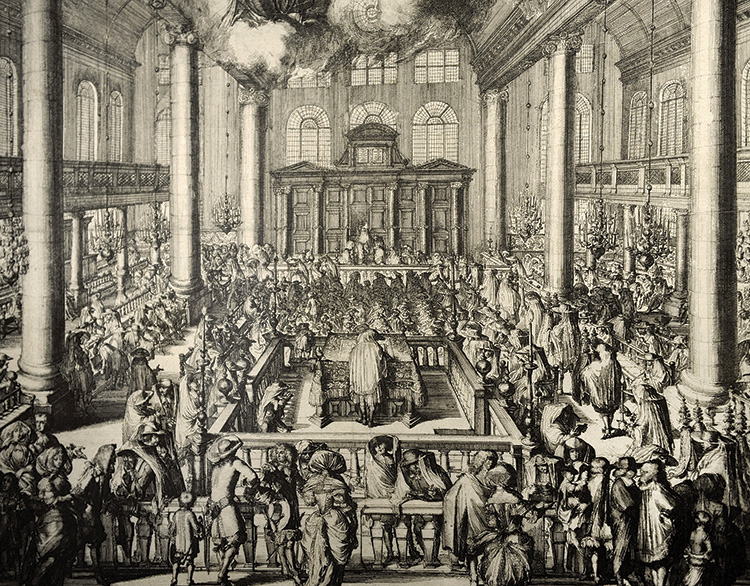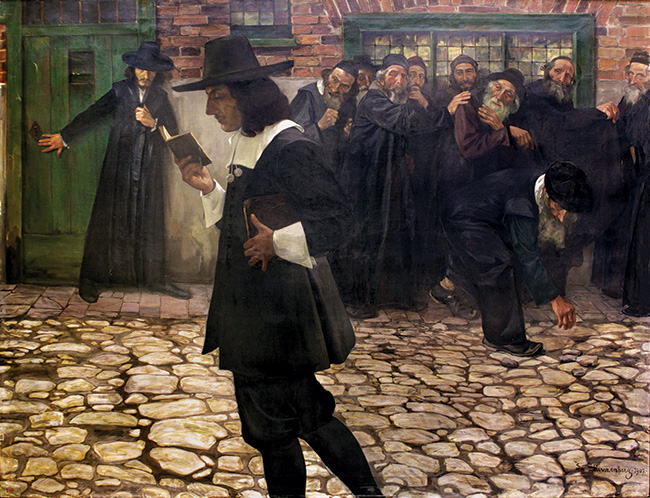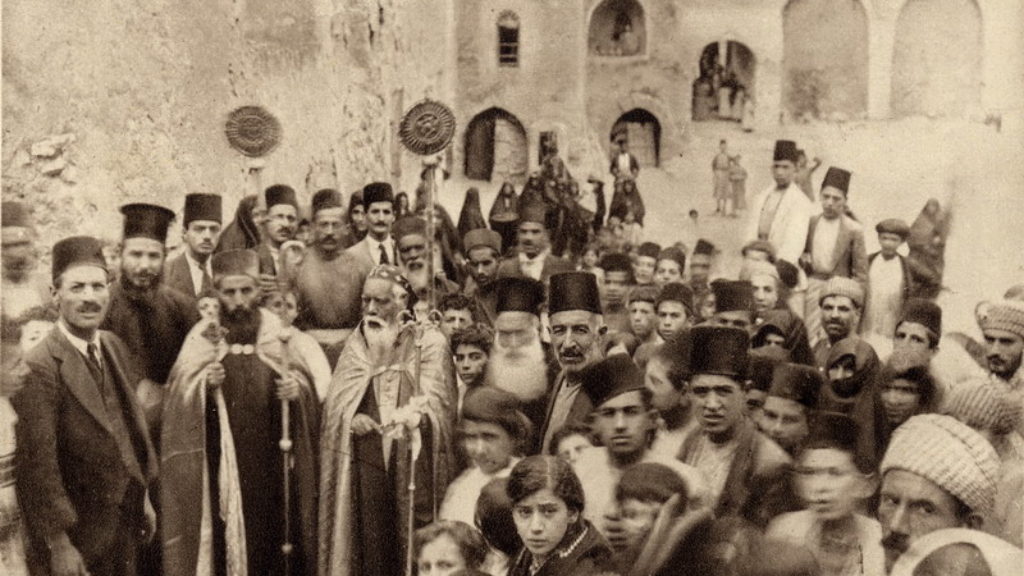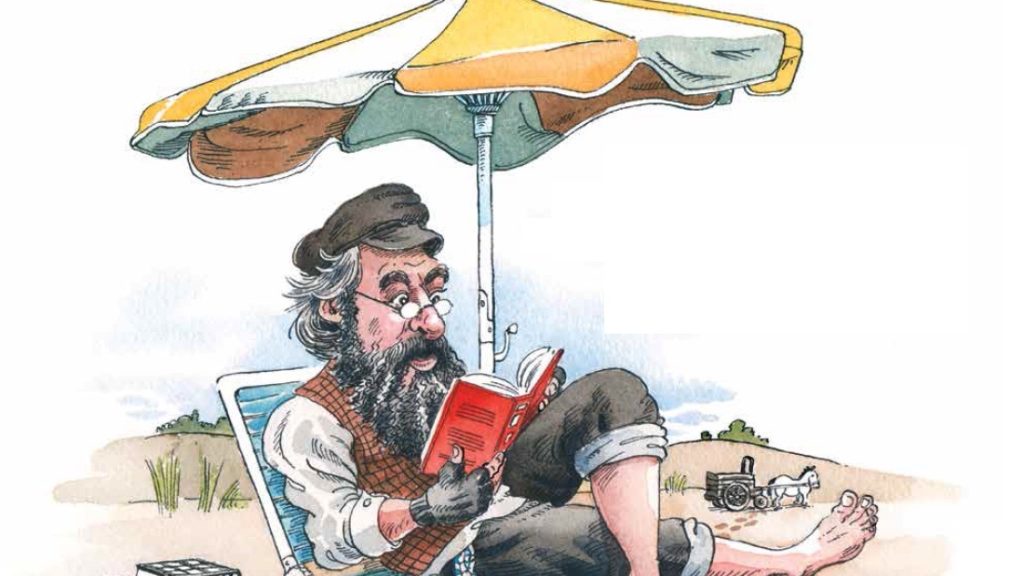Who Tried to Kill Spinoza?
In the pantheon of great dead philosophers, few have been the subject of as much imaginative literary invention as Spinoza. Because so many biographical details are hidden, both his fans and his critics have been willing to believe remarkable stories about him, as either heretic or hero, that have only the flimsiest foundation in the historical record. Among the many tales that have come down to us from the 17th century, one particularly dramatic episode stands out: an alleged attempt on Spinoza’s life, possibly by a member of the Portuguese Jewish community of Amsterdam, from which he was excommunicated. But did such an attack take place? And if so, what might have been the motive for it?
The story first appears in 1697, 20 years after Spinoza’s death, in Pierre Bayle’s article on Spinoza in his Dictionnaire historique et critique. After discussing the young Spinoza’s growing doubts about Judaism as well as the congregation’s “offer to tolerate him, provided he at least accommodate himself outwardly to their ceremonies,” Bayle writes:
Nonetheless, he distanced himself from their synagogue only little by little; and perhaps he would have maintained for a while longer some relationship with them, if he had not been treacherously attacked while exiting the theater by a Jew, who stabbed at him with a knife. The wound was slight, but he believed that the assassin’s intention was to kill him. It was then that he broke entirely from them, and this was the cause of his excommunication.
This is melodramatic but plausible. Spinoza had acquired a taste for the theater while studying with the former Jesuit Franciscus van den Enden, who taught him Latin and classical literature and who may also have encouraged his further study of the philosophy of Descartes.
Unfortunately, Bayle does not give his source for this episode. However, the story is repeated only eight years later, with some differences, by the Lutheran minister Johannes Colerus in his Korte, dog waaragtige Levens-Beschryving, Van Benedictus de Spinosa (Short but Truthful Account of the Life of Benedictus de Spinoza):
Mr. Bayle writes, too, that on a certain occasion, when Spinoza was coming out of the theater, he was attacked by a Jew, who gave him a slight cut on his face with a knife, and that he suspected that it was an attempt on his life. However, Spinoza’s landlord and his wife, both still alive, tell me that he had often told them about this in a different way, namely, that on a certain evening when he was coming out of the old Portuguese synagogue he was assaulted with a dagger, seeing which, he turned around, and thus the thrust was received by his clothing, of which he still kept a garment, as a lasting reminder.

Colerus lived in The Hague, and the landlord and his wife that he mentions were members of his church who had Spinoza as a tenant from 1670 until his death in 1677. Although it was by now three decades after the philosopher’s death, Colerus took advantage of the opportunity to ask them about their famous lodger and, among other things, “correct” Bayle’s account. Bayle and Colerus are our only two sources for this alleged assassination attempt. We do not know to whom Spinoza may have mentioned it, although perhaps it is in one of the personal letters that his friends destroyed after his death.
Despite the differences—theater versus synagogue, a face wound versus a tear in his clothing—Bayle and Colerus agreed on something important: The attack took place while Spinoza was still a member of the Amsterdam Portuguese Jewish congregation Talmud Torah. Colerus has Spinoza coming out of the synagogue, which he would hardly have been doing after his herem, or ban. Indeed, we know that in the months leading up to his excommunication, Spinoza was still, at least nominally, a member in good standing of the community, since he continued to pledge (if not pay) his communal taxes. Bayle does not mention the synagogue, but his account also has the attack occurring before the herem, since he alleges that it was the attack that convinced Spinoza to quit the Jewish community, which in turn led to his excommunication. This means that the attack, if it did happen, took place before July 1656, when Spinoza was issued the most rhetorically extreme herem ever pronounced by that congregation. Whatever its reason, then, the assassination attempt was not an act of retaliation for his departure from the community.
Let us assume that there was such a knife attack and that it was by an Amsterdam Jew. While we do not know Bayle’s source, Colerus implies that he heard about the attack only once removed from Spinoza. His parishioner, the landlord, was a painter named Hendrik van der Spijk. It is certainly possible that Van der Spijk learned about the attack only from reading about it in Bayle’s dictionary, but that seems doubtful. Even though Van der Spijk was apparently something of an intellectual, I wonder whether this multivolume French work would have fallen into his hands. More to the point, there seems to be no reason not to think that Spinoza himself described the event to Van der Spijk and his wife, with whom he was open and friendly.
Possibly, the Jewish assailant was one of Amsterdam’s Sephardim, as opposed to being from the more recently established German and Eastern European Jewish community, and possibly a member in good standing of the Talmud Torah congregation (although we have no evidence for this latter assumption). The ethnicity of the assailant and the dating of the knife attack are important for reasons that will become clear. So, we have an unnamed suspect, and we have a weapon. However, we do not yet have a motive. Neither Bayle nor Colerus gives a reason for the assault.
After the reports by Bayle and Colerus, the assassination attempt, when it is mentioned at all, has usually appeared only briefly and in passing in popular accounts of Spinoza’s life and thought. It is rarely alluded to in the scholarly literature. When an explanation has been offered for the attack, it has usually been that there was growing anger against, and even fear of, Spinoza among the members of the city’s Portuguese Jewish community for propounding heretical ideas about God, Jewish law, and the soul. According to one early and colorful (but often unreliable) account, the anonymous Vie de Spinoza published in 1719, there was much talk in the congregation about Spinoza’s opinions in the period leading up to the herem; people, especially the rabbis, were curious about what the young man was thinking. As the author of the Vie tells it—and this anecdote is not confirmed by any other source—“among those most eager to associate with him there were two young men who, professing to be his most intimate friends, begged him to tell them his real views. They promised him that whatever his opinions were, he had nothing to fear on their part,” and they even suggested that if one read Moses and the prophets closely, then one would be led to the conclusion that the soul is not immortal and that God is material. “How does it appear to you?” they asked Spinoza. “Does God have a body? Is the soul immortal?” After some hesitation, Spinoza reportedly took the bait.
I confess, said [Spinoza], that since nothing is to be found in the Bible about the non-material or incorporeal, there is nothing objectionable in believing that God is a body. All the more so since, as the Prophet says, God is great, and it is impossible to comprehend greatness without extension and, therefore, without body. As for spirits, it is certain that Scripture does not say that these are real and permanent substances, but mere phantoms, called angels because God makes use of them to declare his will; they are of such kind that the angels and all other kinds of spirits are invisible only because their matter is very fine and diaphanous, so that it can only be seen as one sees phantoms in a mirror, in a dream, or in the night.
With regard to the human soul, Spinoza is said to have replied, “whenever Scripture speaks of it, the word ‘soul’ is used simply to express life, or anything that is living. It would be useless to search for any passage in support of its immortality. As for the contrary view, it may be seen in a hundred places, and nothing is so easy as to prove it.”
At first Spinoza’s “friends” thought that he was merely trying to shock them. But when they saw that he was serious, they started talking about him to others. “They said that the people deceived themselves in believing that this young man might become one of the pillars of the synagogue; that it seemed more likely that he would be its destroyer, as he had nothing but hatred and contempt for the Law of Moses.” The Vie relates that when Spinoza was called before his judges, these same individuals bore witness against him, alleging that he “scoffed at the Jews as superstitious people born and bred in ignorance, who do not know what God is, and who nevertheless have the audacity to speak of themselves as His People, to the disparagement of other nations.”
The Vie does not mention a knife attack, but its often fanciful narrative has probably nourished much of the speculation around the religious motives behind the assault. Spinoza’s views, on such accounts, were so threatening to the Amsterdam Sephardim, many of whom were the religiously anxious descendants of Iberian conversos, that perhaps one or two violent fanatics from within the community decided to do something about it. Here is a less well-known example of such speculation from Philip Krantz’s Barukh Spinoza, zayn leben un zayn filozofye (1905), a Yiddish book intended to introduce Spinoza to a wider audience:
The agitation among the Jews [against Spinoza] became even stronger, and there was a fanatic who decided simply to kill him, and to put an end to the whole disturbance and to a dangerous heretic [apikores]. One night, when Spinoza was coming out of the theater, someone attacked him with a knife in hand. Fortunately, Spinoza noticed it in time, and managed to turn a little to the side, so that the knife only sliced his coat.
Such accounts have drama on their side, but I have come to doubt that, if there was indeed an attempt on Spinoza’s life, it had anything to do with Spinoza’s early ideas about God, scripture, or immortality.
In the first edition of my biography of Spinoza, while I suspended judgment on whether such an attack in fact occurred, I did point to a broader “climate of deep hostility in the Jewish community regarding apostasy, of which Spinoza was around this time showing early but unmistakable signs.” I noted that the rabbis and communal leaders were frustrated by recent conversions to Christianity from within the community and that therefore some members may have been “pushed to adopt a passionate and murderous attitude” toward congregants who defected or seemed likely to do so. When preparing the second edition, published earlier this year, I saw no reason to modify this version of the event.

However, upon further reflection I am skeptical that anger over Spinoza’s heretical ideas is likely to have been a motive for such a vicious attack. The Amsterdam Portuguese Jewish community was fairly cosmopolitan. To be sure, one was not free to proclaim whatever one wanted; after all, this was a 17th-century Jewish community, and there were clear limits not just to what one could do but also to the ideas one could voice. But many members of the community, including its rabbis, engaged in wide-ranging philosophical and theological discussions. Even if Spinoza went too far—and he clearly did—to see the attempted murder as a reaction to his heretical views and rejection of communal authority now seems to me a little far-fetched. In fact, there is a more readily available and plausible, if mundane, explanation—an explanation whose elements were right there in front of me all the time.
When Spinoza’s father, Miguel de Spinoza, died in 1654, Spinoza and his brother Gabriel took over the family importing firm. Several notary records from April and May 1655 provide an interesting glimpse into Spinoza’s character and business acumen. There were three Portuguese Jewish brothers, Anthonij, Gabriel, and Isaac Alvares, who had come to Amsterdam from Paris and were now living on Uylenburg in a house called De Vergulde Valck (the Gilded Falcon). They were jewel dealers and apparently rather shady characters. Spinoza had a bill of exchange (wisselbrief)—basically an IOU—for the amount of five hundred guilders to be paid by Anthonij Alvares. This bill went back to November 1654 and was originally owed to Manuel Duarte, a member of a prominent Jewish family. Duarte, who was also a jewel dealer, had signed the bill over to Spinoza, and it was now his to collect. (As A. M. Vaz Dias has suggested, this may indicate that Spinoza had expanded the family business to the jewel trade, which was doing particularly well at this time.)
This Anthonij Alvares procrastinated about paying the bill for some time, always “saying he would pay within two or three days or a week.” When Spinoza finally pressed the issue, Anthonij offered a partial payment by giving Spinoza a bill of exchange for two hundred guilders to be paid by his brother Gabriel Alvares, with a promise that he would pay the remaining balance soon. Spinoza accepted this offer, but, not surprisingly, Gabriel Alvares refused to cooperate. So Spinoza returned to Anthonij, demanding full payment. Anthonij, despite “daily promises to pay,” continued to delay. Spinoza began to lose patience and demanded either full payment or to be given jewelry as surety, all to no avail.
Anthonij had one more trick up his sleeve: He claimed that the original bill on him was payable only in Antwerp, where it would be covered by one Pedro de Palma Carillo. Tired of the game—this had been going on for several months now—Spinoza finally filed a complaint with the bailiff of Amsterdam, Cornelis de Vlaming van Oudtshoorn, and had Anthonij Alvares arrested in May 1655. Alvares was taken to the inn De Vier Hollanders (the Four Dutchmen) and held until he paid the full amount Spinoza was owed. The notary document itself best tells the tale of the subsequent events:
Anthonij Alveres then asked the requisitionist [Spinoza] to come to the inn to reach an agreement with him. . . . When [Spinoza] arrived there, the said Anthonij Alveres hit the requisitionist on the head with his fist without there having been spoken a word in return and without the requisitionist doing anything.
Eventually, Spinoza and Alvares appear to have come to some kind of agreement, although it apparently included Spinoza paying the costs of the arrest. Spinoza left the inn to get the money, but when he returned, Anthonij’s brother Gabriel was waiting for him:
Gabriel Alveres, also a brother of the said Anthonij Alveres, was standing in front of the inn and hit the plaintiff on the head with his fist without any cause, so that his hat fell off; and the said Gabriel Alveres took the requisitionist’s [Spinoza’s] hat and threw it in the gutter and stepped on it.
Nonetheless, with the innkeeper and everyone else who saw the assault as witnesses, Spinoza and Anthonij came to an agreement later that day. Anthonij would provide surety for the five hundred guilders. Spinoza, for his part, was now no longer willing to pay for the expenses of the arrest, but—astoundingly—he did agree to loan Alvares the money to cover the costs. The third brother, Isaac Alvares, promised to repay the loan, along with “the damages and interests suffered by [Spinoza] as a result of the default of the payment and his not having the said money back.” He also promised to reimburse Spinoza for his hat. We do not know if Spinoza ever saw a cent.
All of this took place just a year before the herem and possibly close to when the knife attack is supposed to have occurred. There was certainly bad blood between Spinoza and the Alvares brothers, who appear to have had a tendency to physical violence. Not only were they giving Spinoza the runaround, but they would have been angered by his resort to the legal authorities to have them arrested. It is a classic tale, from a competitive mercantile city in the Dutch golden age where trade disputes were frequent and where it was essential to one’s business to maintain a good reputation for fair dealing. With the notarized complaints and arrests, Spinoza publicly put the Alvares brothers under suspicion of being untrustworthy. It would not be surprising if one member of this shady trio responded with an attack on Spinoza’s life. It seems quite possible, then, that the attempt on Spinoza’s life described by Colerus, who puts it outside the synagogue and thus right in the heart of the Jewish neighborhood, was (if it happened) not a zealous attack on a dangerous heretic. More likely, it was a simple case of vengeance by unscrupulous, thuggish businessmen.
Suggested Reading
A Rejoinder
I didn’t know that there was anyone left in the academic world who held as simplistic view of history as the one that Eric Alterman espouses in his response to my review (“Context and Content,” Winter 2023). The historian’s job, he says, “is not to voice disapproval or approval” of anything. Consequently, he endorses “nothing and no one in this…

Where Abraham Walked
Preserved for centuries by Syrian Christians, spoken-Aramaic is now breathing its last.

Reader Review Competition
Review a book for us and perhaps win a book in return!
Friends of Zion
Getting by with a little help from our friends.
Comments
You must log in to comment Log In